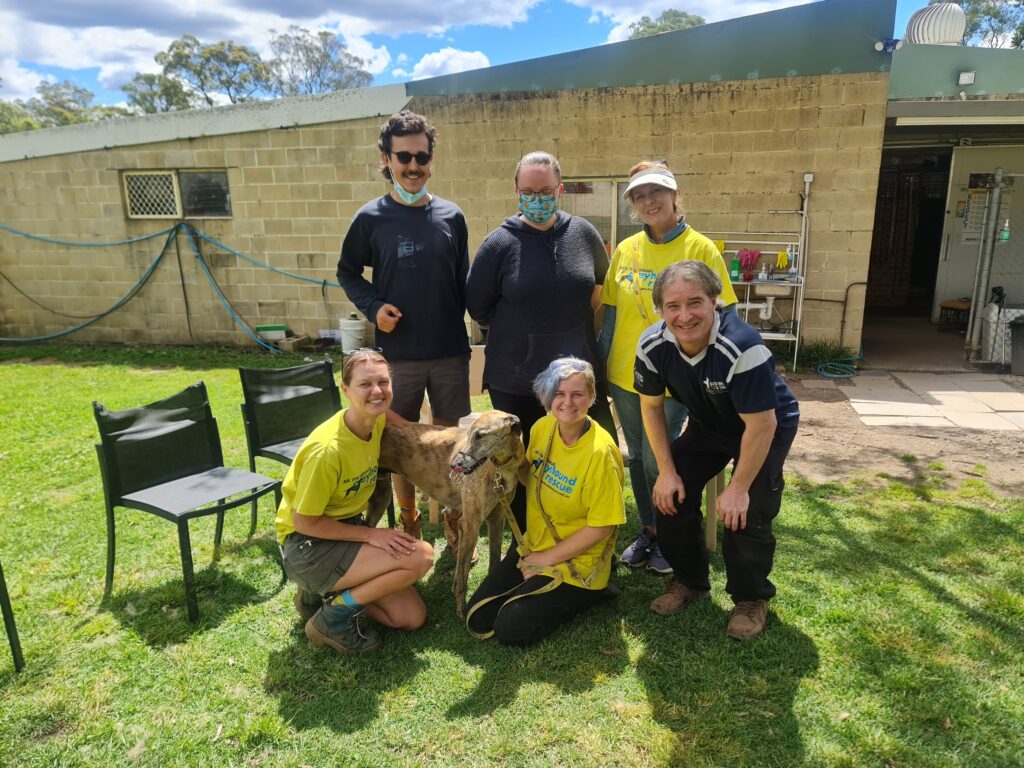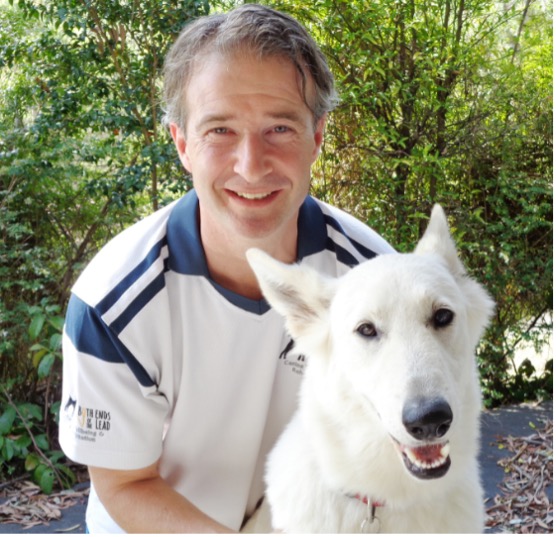We were recently lucky enough to have Tim Norris from Both Ends of the Lead visit Greysland and complete some massage work and training with our team. An Animal Physiotherapist and Registered Acupuncturist, Tim has over 17 years’ experience working with older dogs and dogs with Arthritis.

He has put together some tips for us on how to minimise pain and help your older dog through their twilight years.
Here’s what he had to say:
Looking into an older dogs’ eyes, you can see just how special they are. You can feel the gentleness and sense the wisdom they’ve gained over their lifetime. I believe we have so much we can learn from our older dogs, and why I feel so very blessed to be able to ‘give back’ to these beautiful old dogs that make our world a better place.
I was blessed with a very special old dog, my ‘Kia’. She was my best friend for many years and travelled to the other side of the world with me, when I moved my life to Australia back in 2004. We went everywhere together. She loved her new life of running on the beach and swimming in the ocean. It was heart breaking for me to see her slow down and find life harder in her twilight years. Kia inspired me to do all I can to help as many older dogs as possible live the longest, healthiest and pain-free lives possible.

After 17 years of working with older dogs and dogs with arthritis, I can say without hesitation, there is always something you can do to improve their quality of life. As little as 5 minutes a day consistently working on some simple strategies could change your older dog’s world and give you more time together – because we all want our dogs to live forever.
Let’s break it down into five key areas.
Diet
Keeping your dog at a healthy weight is crucial to their longevity and quality of life. If your dog is overweight, it puts them at a greater risk of arthritis and wide range of health issues.
A few simple tweaks can make a huge difference to your dog’s health, their mobility and comfort levels. A fresh food diet is the most healthy and nutrient dense diet you can feed your dog.
Here are a few tips to get you started:
- Meat is the starting point and where your dog needs to get quality protein from. Muscle meats are crucial to a dog’s diet. You can try beef, lamb, chicken, and turkey. Your dog will benefit from varying the meat regularly.
- Good quality protein is the building block for healthy skin, hair, muscles, and ligaments. Protein from muscle meat will give your dog the key amino acids they need in their diet to thrive.
- Fresh organ meat (like liver and kidney) is like nature’s multi-vitamin – great sources of essential vitamins and minerals for an aging dog. When introducing organ meat, only start with a small amount to give your dog time to adapt to any new food.
- A small amount of fresh fruit and veggies provide your aging dog with important antioxidants to reduce toxicity in your dog’s body and help protect against inflammation.
Supplements
Natural joint supplements can be life changing. They help reduce inflammation and provide your dog’s joints with essential nutrients to protect against the degeneration process.
The biggest challenge is deciding which supplement is best suited for my dog, as there are so many to choose from.
- Eggshell membrane (the inside lining of the eggshell) contains collagen, glucosamine and chondroitin, all essential to protecting aging joints and reducing inflammation.
- Bone broth is a great source of glucosamine and chondroitin and can help reduce inflammation throughout your dog’s body and improve their digestive health.
- Green-lipped mussel, PEA and Phytoplankton are also great options.
Bedding
Investing in a high-quality orthopaedic bed is an investment in not only your dog’s comfort, but in their time together with you. The memory foam in a high-quality orthopaedic dog bed helps relieve the everyday stress on an older dog’s joints, meaning better quality sleep and it’s easier for them to get up from.
Exercise
As your dog ages, it’s important to adjust the way you exercise them. Activities that were once effortless for them will be getting harder and can even become an injury risk.
Many older dogs I’ve worked with over the years have been either over exercised, or not exercised at all, their owners worried that walking them was bad for them.
- Little and often is a good starting point. Three x 10-minute walks a day are easier on an aging dogs joints than one thirty minute walk. If at a certain point your dog starts to slow down and struggle a little, that’s probably the furthest they should be walking. There will always be days when your dog is feeling and moving better than others, so consider that when you decide how long to walk them for.
- Also consider the intensity. Fetch and chase may have been a lot of fun when they were younger, but with older dogs these are two of the easiest ways to cause joint problems and unnecessary pain.
Get ‘Hands-on’
This is one of the most important things you can do to help relieve pain and help your older dog feel better. Some simple massage techniques can make a big difference to your aging dogs’ quality of life.
- Massage helps relive sore muscles and eases the stress on aging joints, and it feels great too.
- Here’s a simple massage sequence you can use for your dog to help ease any sore, stiff muscles in their back legs.
- Another great way to get more ‘hands-on’ with your dog is to learn some gentle stretches and strength exercises, so they can be stronger for longer and keep doing all the things they love.
- Starting to build an ‘Older Dog Home Care Program’ is a great way to keep your aging dog in your world for longer with you.
- If you’d like to learn more ways to help your older dog have the best quality of life possible, download my free e-book ‘I Don’t Know I Have Arthritis … I Just Know How Much It Hurts’ here.

You can find out more about Tim here, or visit his You Tube Channel to learn more.

